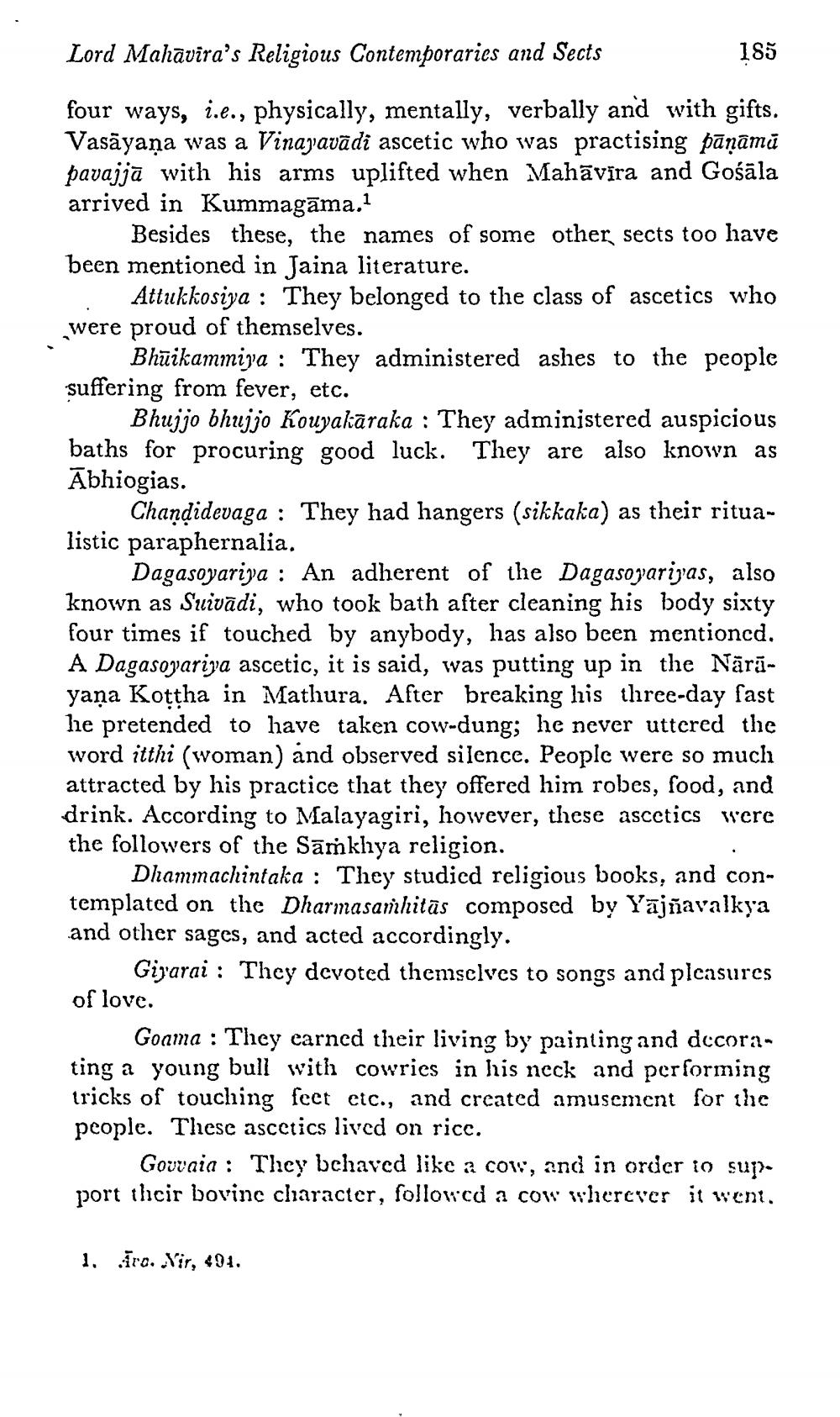________________
Lord Mahāvīra's Religious Contemporarics and Sects
185
four ways, i.e., physically, mentally, verbally and with gifts. Vasāyaṇa was a Vinayavādi ascetic who was practising pāņāmā pavajjā with his arms uplifted when Mahāvīra and Gośāla arrived in Kummagāma.l
Besides these, the names of some other sects too have been mentioned in Jaina literature.
. Attukkosiya : They belonged to the class of ascetics who were proud of themselves.
Bhūikammiya : They administered ashes to the people suffering from fever, etc.
Bhujjo bhujjo Kouyakāraka : They administered auspicious baths for procuring good luck. They are also known as Ābhiogias.
Chandidevaga : They had hangers (sikkaka) as their ritualistic paraphernalia.
Dagasoyariya : An adherent of the Dagasoyariyas, also known as Suivādi, who took bath after cleaning his body sixty four times if touched by anybody, has also been mentioned. A Dagasoyariya ascetic, it is said, was putting up in the Nārāyaņa Kottha in Mathura. After breaking his three-day fast he pretended to have taken cow-dung; he never uttered the word itthi (woman) and observed silence. People were so much attracted by his practice that they offered him robes, food, and drink. According to Malayagiri, however, these ascetics were the followers of the Sāmkhya religion.
Dhammachintaka : They studied religious books, and contemplated on the Dharmasanhitās composed by Yājñavalkya and other sages, and acted accordingly.
Giyarai : They devoted themselves to songs and pleasures of love.
Goama : They carned their living by painting and decorating a young bull with cowries in his neck and performing tricks of touching feet cic., and created amusement for the people. These ascetics lived on ricc.
Govraia : They bchaved like a cow, and in order to sup. port thcir bovinc character, followed a cow sherever it went.
1.
Tro. Nir, 491.




